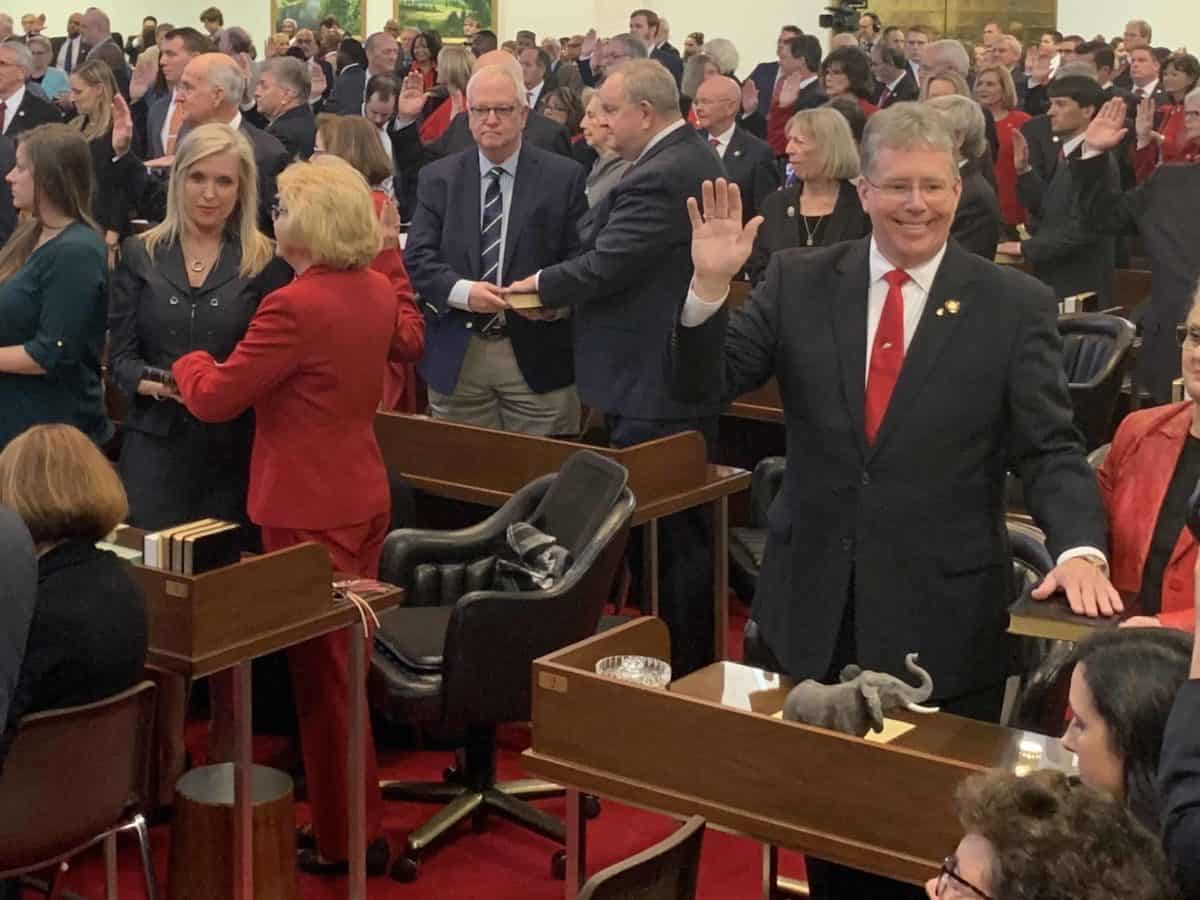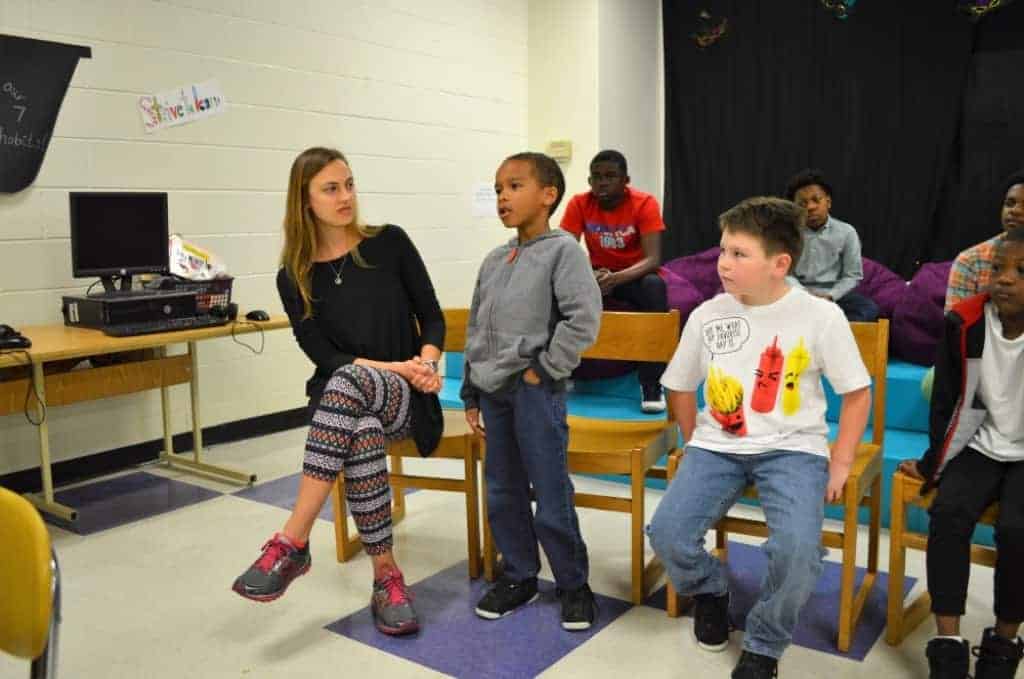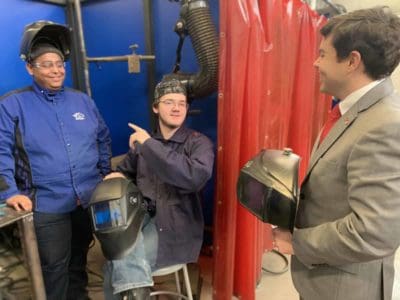

As the General Assembly gets underway for the 2019 long session, advocacy groups wonder how — and whether — legislators will try to make a difference in the lives of children with learning differences.
“Learning differences” is a term used to describe students who have non-traditional learning profiles and who struggle to keep up in classrooms designed for the “average learner.” According to researchers and advocacy groups, learning differences (or LD) affects one in five kids in schools. That’s roughly 10 million children nationwide.
At a high-level, advocacy groups for LD students favor:
- Preparing teachers and providing them resources to support diverse learners
- Trying to understand these students and include them in conversations about their learning process
- Educating parents and equipping them with the tools needed to understand and advocate for their children
- Optimizing personalized learning environments for neuroscience advances
- Strengthening and developing tools to describe the dimensions of learning
But, as a relatively new issue, the primary legislative priority is on awareness: specifically, educating lawmakers on what learning differences are and how they can help.
“We advocate for stronger, more equitable public policy through 1) educating policymakers, agencies, White House and others on education, transition, training, employment and other critical issues for students with learning difficulties and disabilities, 2 ) leading knowledge-building initiatives to drive the policy debate, to build consensus around best practices, and to improve legislation, 3) creating campaigns and conducting Annual Advocacy Days to mobilize parents and advocates, and 4) targeting selected states and districts that are important in the national education discussions and debates.”
– Oak Foundation
Lobbying the state legislature for help, it turns out, is not as simple as seeking support for funding a special program, teaching educators how to address learning differences, or improving student environments or classroom resources. Learning differences take on a broad range of indications and emanate from an even broader range of sources, so it requires all of those things.
We spoke to advocates in the LD and related fields and discussed how some of the education agenda items that might be before this year’s legislature will have an impact on children with learning differences.


Recruiting and retaining high-quality personnel
Policy Issues: Professional development funding, classroom and school resources, and teacher pay
The General Assembly cut the budget line item for teacher professional development from the state budget during the recession and has never restored it. In 2008, the state budgeted $12.6 million for educator professional development and that line item is now zero. This year, as the legislature hears calls for recruiting and retaining the best teachers, re-establishing professional development funding for teachers is likely to be discussed.
Advocates say professional development programs educating teachers on learning differences and how to help LD students is essential.
“You’ve got to invest in the ongoing professional development in the professional learning communities and have the schedules and resources and the capacity within the schools in order to do that,” said Beth Anderson of Hill Learning Center. “We invest a significant amount in our own teachers’ professional development. We’ve got teachers who are 30-year veterans and we’re still investing in their professional development because we’ve got to all keep learning.”
Hill Learning Center works with a number of educators on professional development programs that address learning differences, among other areas. By Anderson’s estimate, they train 1,000 to 1,200 teachers a year. “And they’re craving professional development,” she said.
In addition to recruitment and retention of teachers, LD advocates and others call for more specialized instructional support personnel, such as nurses and psychologists. Last session, advocates met with legislators to encourage them to ensure every school had at least one full-time, certified school counselor as a starting point for bringing North Carolina’s ratio of counselors to students up from 1:386 closer to a recommended average of 1:250.
“Making sure that we are adequately funding professional support — so nurses, guidance counselors, school psychologists — is a really important part of making sure the schools are healthy places for our students to learn,” said Corye Dunn, Director of Public Policy at Disability Rights North Carolina. “Those positions have been cut tremendously.”
Dunn points to an example in one county where a nurse visits six schools, spending one full day at each of the four largest schools and two half days at the two smaller schools.
“That’s not adequate access to a school nurse,” she said.
Last session, the legislature gave teachers a 6.5 percent pay increase, and another major education issue likely to come up is continuing to address teacher pay — which in North Carolina falls below the national average.
NaShonda Cooke is a special education interventionist at Carroll Middle School and a member of the Governor’s Teacher Advisory Committee (GTAC). She said the GTAC deals with LD in many of its breakout committees, and that it starts with teacher quality.
“We talk about how to retain and prepare teachers from all over the state to address those students: to bring in the new ideas and new strategies that they can do in the classrooms but to also fairly compensate them to want to come and stay in our state and teach in our state,” she said. “We talk about how to reach those teachers and how to share resources that we have to reach the learning differences that each child has.”
Any move that will help districts get and keep high-quality teachers — whether opening doors to professional development, adding specialized instructional support personnel, or raising pay — is going to be helpful to children with learning differences. For them, receiving individual attention from teachers or staff who strive to understand how to reach them is essential, according to research from the Oak Foundation.
LD advocates say when teachers are overburdened or unaware of learning differences, students are stuck learning under a single methodology built for the “average learner,” and the child can get left behind. Frustrated with the difficulties of learning in a one-size-fits-all system, these children tend to act out or get labeled as lazy.
Avoiding this trap, advocates say, starts with improving the quality of adults in the schools — not by any one means but by any and all means.
“I think we make a mistake if we set them up as either/ors if we’re talking about funding and financing these things,” said Mandy Ableidinger, policy and practice leader at the NC Early Childhood Foundation. “All of what we’re talking about here is how to make for high-quality teachers in the classrooms, which research shows is critically important for children’s outcomes. In fact, perhaps the most important thing for children’s outcomes is the relationship between a teacher and the child.”
Sensitivity for how school safety measures impact certain kids
Policy Issues: Threat assessment teams, adding school resource officers, Raise the Age and School Justice Partnerships
Last session, the House introduced a bill (H934) requiring the creation of “threat assessment teams” covering every school in the state. These teams would be comprised of counselors, administrators, and law enforcement agents to help educate students, teachers, and staff how to recognize threatening behavior by a student. The bill did not pass, but Dunn thinks it, or something like it, could come up again.
“There’s some real confusion in message about the source of danger,” Dunn said. “Our clients are often blamed as a source of danger — our clients being students with disabilities.”
Dunn and the Disability Rights North Carolina team work with students with learning disabilities, which includes learning differences, but also includes students with severe learning disabilities such as autism. Some of these kids may not want to be touched, and when they become agitated, standard approaches by school resource officers or threat assessment teams could provoke the child to flail or avoid contact in a manner that strikes the adult, a result which was never intended.
“We have a concern that school resource officers are often a conduit to turn a behavior problem into a criminal charge,” Dunn said. “We’re trying to avoid that.”
The issue here is training. However, schools already face a shortfall of qualified psychologists, and advocates in the LD and learning disability space say law enforcement and school resource officers are not always properly trained on behaviors and responses to this group of children.
Training for law enforcement — and specifically school resource officers — is mandated under the Raise the Age legislation, which passed in 2017 and will take effect in December. The training, through School Justice Partnerships, has been slow to take shape with some schools opting out of participating in planning because they believe they are taking on more liability.
“I think that’s a stretch, at best,” Dunn said. “But some schools have opted not to participate in that kind of planning. And it’s supposed to be court officials, law enforcement officials, school officials, and behavioral health providers in a community coming together to make a plan about how is this really supposed to work?”
Considering LD students when building and renovating schools
Policy Issues: School bond bill
House speaker Tim Moore, R-Cleveland, is in the midst of a statewide tour to discuss a bond bill he intends to propose for school construction and infrastructure. The bill is primarily aimed at addressing aging buildings and overcrowded classrooms, but it also includes provisions for allowing schools to pay off debt and address school safety. In addition to addressing these needs, advocates want to see this bill include provisions for children with learning differences and learning disabilities.
“Anytime there’s an investment in infrastructure, which is so rare, we want to make sure that before we add on new priorities, we meet the needs of the students we’ve been ignoring for a long time,” Dunn said. “Whether that’s physical accessibility or just a physical plan that allows for a more integrative experience.”
Nationwide, teachers seem to want learning environments to change — specifically to be larger and encourage group work and independent learning. Transcend is a group committed to helping schools cultivate personalized learning environments. Funded by a grant from the Oak Foundation, Transcend works with school design that better serves the needs of diverse learners.
“In most classrooms, the teacher is the hardest-working person in the room,” Transcend co-founder Aylon Samouha said. “Teachers instruct, monitor, encourage, redirect and try to keep all children engaged in their learning. Just adding technology does not make a teacher’s job easier, nor will it automatically personalize learning for every student.”
Samouha’s co-founder Jeff Wetzler adds: “Learning environments need to nurture students’ creativity and hone their abilities to communicate and collaborate effectively with their peers.”
Addressing alternatives to assessments and seat time
Policy Issues: Calendar and seat time mandates, testing
In a recent op-ed, State Superintendent Mark Johnson addressed concerns about the current state of assessments, or testing, in North Carolina public school classrooms. For children with learning differences, this is a major issue. The fundamental concept behind addressing learning differences is moving away from an education model that is designed for an average student — but current testing methodologies are uniform, multiple-choice exams.
The testing, as Johnson says and LD advocates agree, can get in the way of the end-goal for educators.
“We are working with local superintendents and state leaders to reform the system of over-testing that the education industry created,” Johnson wrote. “In doing so, we can get back the time for teachers to do what they entered the profession to do: teach.”
Johnson listed some of the measures he plans to take this year:
- Reducing the number of questions on tests
- Reducing the time students must sit for tests
- Changing testing policies to reduce stress at schools around testing time
- Working with local leaders to reduce the number of tests
- Pushing to eliminate tests not required by the federal government
- Giving students other ways to show progress if they have a bad test day
- Using the appropriate amount of technology as a tool for students and teachers to personalize learning and eliminate tests
LD children might also benefit from changes to calendar and seat-time mandates. The state measures completion of a grade level based upon seat time, or the Carnegie Unit, which awards academic credit on a defined minimum amount of instructional time in a subject area. In North Carolina, public schools are required to achieve a minimum of 185 days or 1,025 hours of instruction covering at least nine calendar months.
In the wake of Hurricane Florence and the significant numbers of teaching days lost, the General Assembly is expected to hear about school calendar and seat-time mandates. For the LD child, an allowance for schools to optimize their instructional models using anytime, anywhere learning, says Mary Ann Wolf of the Friday Institute for Educational Innovation, could help schools seek innovative approaches to delivering highly-personalized learning experiences for all students.
“In North Carolina, we continue to put an emphasis on seat time,” Wolf said. “This, when it comes down to it, also limits some of the opportunities on how we address learning differences — what students can do in the blocks of time they have.”
Added Wolf: “Being more flexible with how we continue learning even when we have a snow or hurricane day, how we use time within a school day, or when school starts and ends, can support continuity and expand learning opportunities.”
Editor’s note: The Oak Foundation supports the work of EducationNC.


